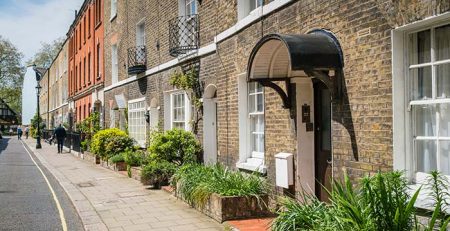A Detailed Guide To The History Of London
According to the historians,

was founded by the Romans in 50 AD. The name of this city comes from the Celtic word Londinios, meaning the p
lace of the bold. Once the Romans invaded UK in 43 AD, a bridge was constructed across the river Thames. To know more about the history of London from its creation to present day, read the rest of this article.
The capital city of England began its evolution with the creation of the Roman bridge but it was not long afte
r that the city was abandoned under the Saxons. From the 9th century, the city rapidly grew within its Roman walls and soon became the new political epicenter at Westminster. Although much of the Roman London had been lost by this time, there were still many timber framed buildings and stone houses that survived the years.
Today, there is hardly any above ground Roman buildings, however, many of the archaeological remains still survive. During the Medieval era, the plague destroyed much of the population in London. Under the Tudors and the demolition of many religious properties, the population slowly started to grow. There were a number of palatial retreats constructed including Hampton Court and Eltham Palace.
When the Great Fire in the early 17th century occurred, it destroyed more than 12,000 Tudor buildings, hence the reason only a handful of these buildings exist today. Even though many Georgian buildings were also burnt down, you can still see some that have survived to this day. Between 1700s and 1800s, the population of this city rose from around 600,000 to almost 2 million. This made London the most powerful and biggest city in the world.
During the Victorian era, the capital city of England expanded once more and the population grew from 2 million to 6 million. This is the period when the London Underground was opened in 1863. It enabled citizens to use the new transport link and avoid the crowded buses. In 1940, the population peaked at around 8 million despite the devastation caused by the Second World War.
During the early 19th century, all Londoners used coal for heating. Because of this, in 1952, the Great Smog which went on for 5 days killed over 3,000 people and left disastrous consequences. Almost a decade later, the bands, Rolling Stones and the Beatles came into the music scene and put London on the map. Many of the streets in the capital were made famous by these pop groups, including Carnaby Street. By 1980s, a new wave of punk rock came about with the emergence of the Britpop era. The city played an important role for youth fashion in the 1980s.
From 1950s until this day, the capital city of England became home to a large wave of immigrants. People from countries such as India and Pakistan flowed into the country and dramatically changed the face of the city. As a result, the racial tensions between the new immigrants and the Brits in Brixton escalated and riots broke out in the early 1980s. Nevertheless, the city became the main hub for multi-culturalism and many foreign investors and companies started investing in the capital.
The estimated population of this capital city is around 8 million, but it is rising fast. In fact, it is predicted that the population will reach to 10 million within the next 10 years or so. This is mainly due to people moving into the city from the surrounding towns and villages in order to seek employment.
As more and more people relocated to the city, there were a greater increase in the number of housing developments and further enhancements in public transport network. However, the mayor is still struggling to fund these projects, hence the reason there is still a shortage of housing. In July 2005, the city won the right to host the Olympics and became the first capital city to play host to such games.
However, the Olympics celebrations were cut short following the series of terrorist attacks that occurred in the capital. There were three bombings which killed more than 50 people and injured more than 700 people. Nevertheless the Olympics games were still a success and changed the face of the capital. The successful opening ceremony was much anticipated without any transport and organizational problems occurring along the way.




Leave a Reply